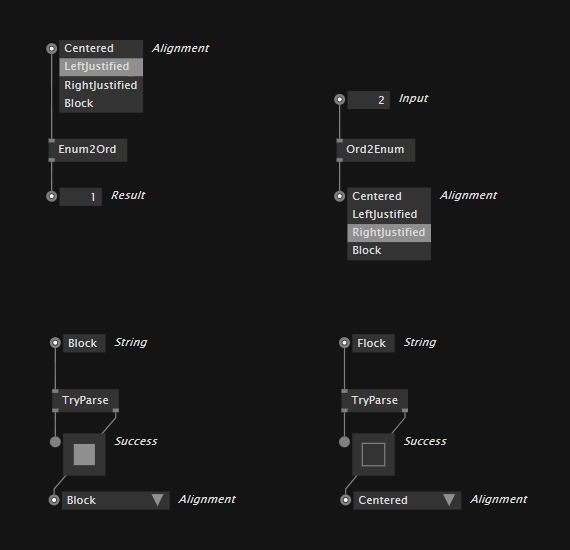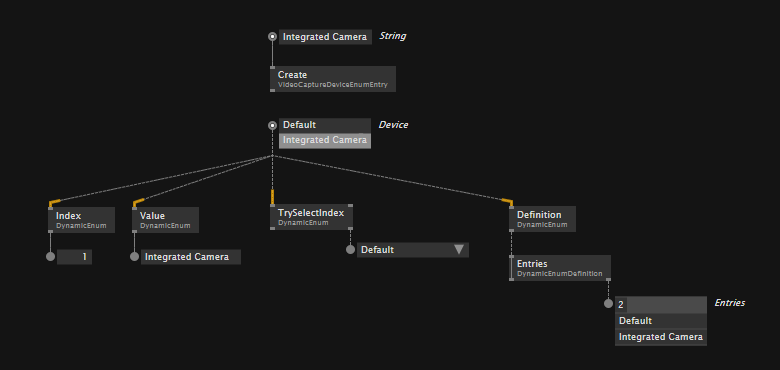Enumerations
An enumeration type (or enum type) is a value type defined by a set of named constants. VL has two different types of enumerations:
- Static Enums
- Dynamic Enums
Static Enums
Entries of a static enum are fixed and cannot change at runtime. An example would be the type LinearSpreadAlignment.
Using Static Enums
For working with static enums, use nodes from the Primitive.Enum category.

Defining Static Enums
As of now static enums cannot be created in VL itself. Instead you have to create a small C# code snippet that defines the enum. Follow the instructions unter writing nodes and choose the "Static Enum" template. Opening the .cs file the template created, you'll see the following line:
public enum StaticEnum { foo, bar };
You can customize this line to your needs, like e.g:
public enum MyEnum { a, b, c };
Saving the .cs file will make the enum available in your VL document.
Dynamic Enums
A dynamic enum can have entries added, removed or changed during runtime. They are used for example for device enumerations.
Using Dynamic Enums
For working with dynamic enums, use nodes from the (advanced) Primitive.DynamicEnum and Primitive.DynamicEnumDefinition category.

Defining Dynamic Enums
As of now dynamic enums cannot be created in VL itself. Instead you have to create a small C# code snippet that defines the enum. Follow the instructions unter writing nodes and choose one of the "Dynamic Enum" templates. Opening the .cs file the template created, you can customize the template.
For more details on this customization, see: Defining Dynamic Enums.
After your changes, saving the .cs file will make the enum available in your VL document.
